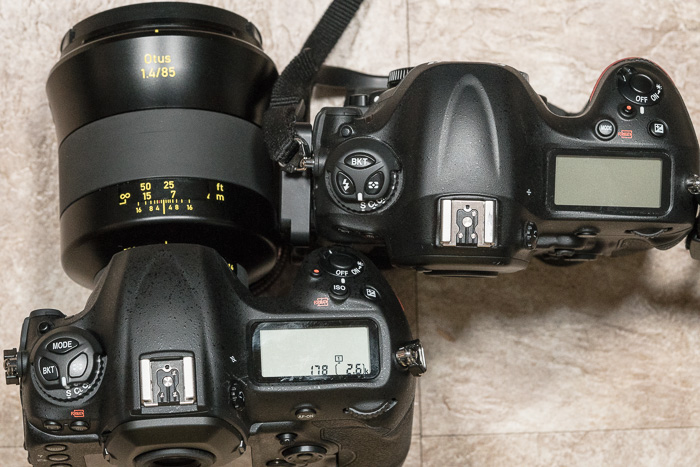This is part of a series of posts about the Nikon D5. The series starts here.
We’ve seen from the dark-field measurements and the modeling of the D5 that a photographer who wants to get the most out of the camera is going to be spending a lot more time changing the ISO setting than in the less “ISO-ful” D4.
Well, the folks at Nikon are on top of that, and they’ve changed the location of some key controls from their positions on the D4.
Let’s take a look at the two cameras:
The D5 is on the bottom left, with the lens attached. The D4 is above it and to the right.
The ISO control, which was on the back of the D4, is now on the top right of the camera, pretty much where the mode control used to be. The mode button has moved over to the top left, where the bracket control used to be. The bracket button has moved leftward and downward, and is still on the top left. The metering control is in the same place. The exposure compensation button is in almost the same place. The flash button has been banished to the back of the camera.
Given the nature of the D5 sensor, this is a sensible choice on the part of Nikon. Photographers who attempt to use both the D4 and the D5 interchangeably may have difficulty. Maybe Nikon figures this will be an incentive to those people to upgrade (sidegrade?) all their cameras to D5s.

Leave a Reply